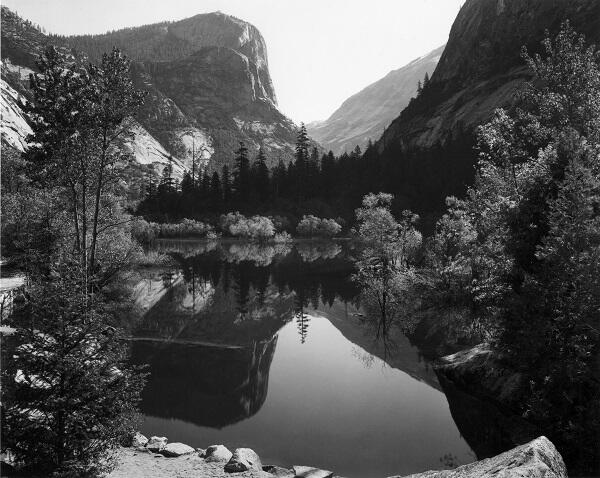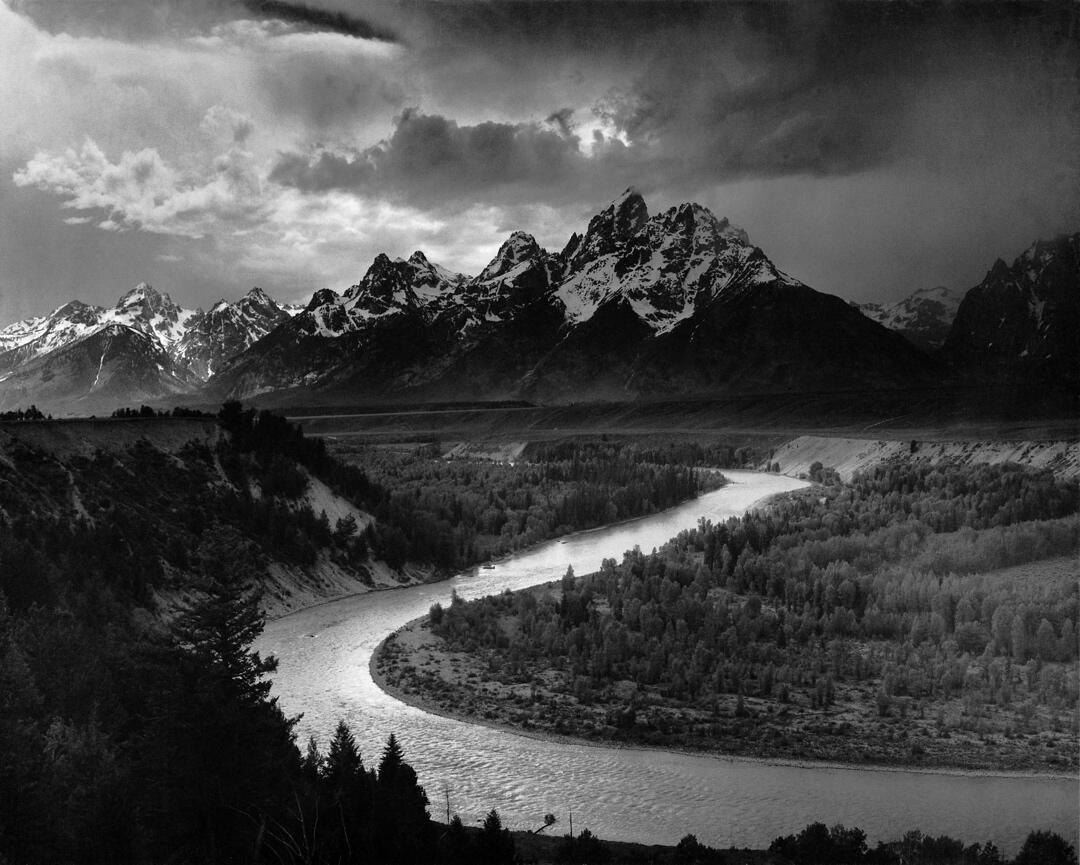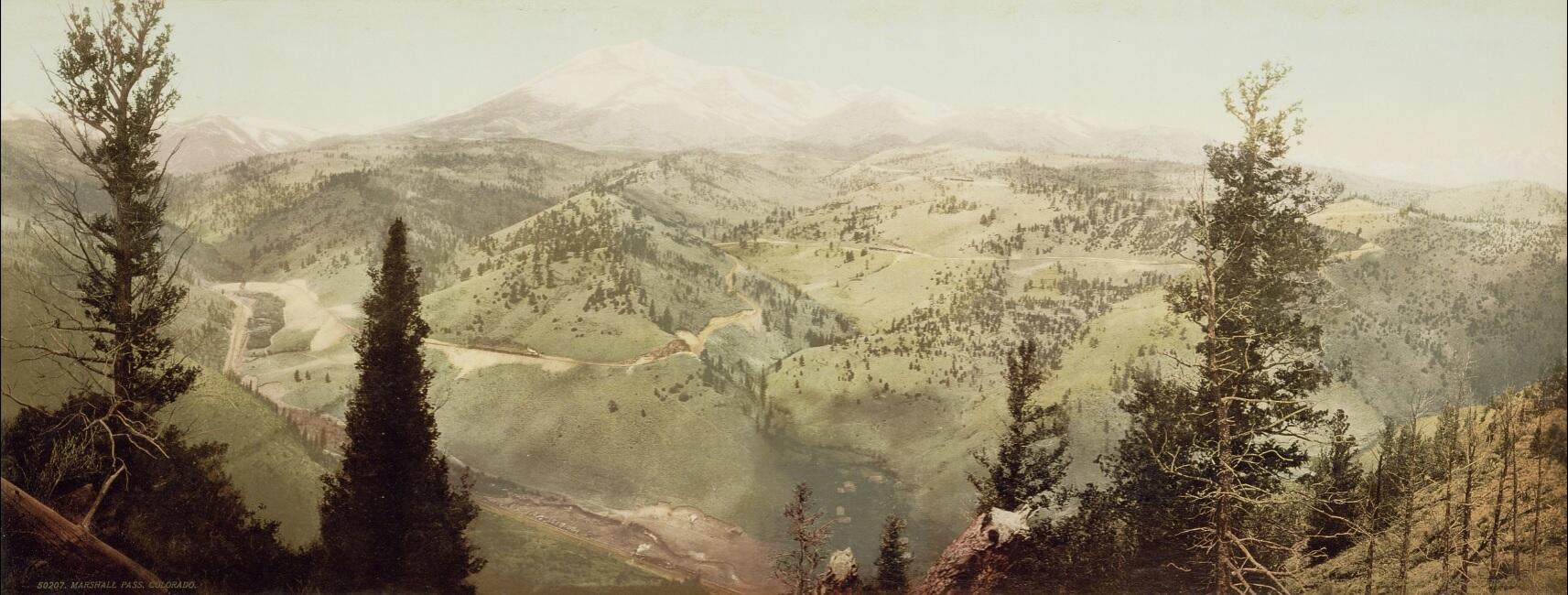Influential Photography
Ansel Adams (1902-1984) was one of the most well-known landscape photographers and environmentalists whose works continue to charm art lovers nowadays. An ardent advocate of conservationism, Adams received his first camera in 1916, at the age of fourteen. At the time, photography had not even reached its first centennial anniversary, and not many people took it seriously as an art (Pritzker 6). Adams, however, became one of those most loyal both to his work and nature, which served as the key object of his photographs. In his lifetime, Adams signed over 10,000 fine prints and made over 40,000 negatives (Pritzker 6). He showed his works at more than 500 exhibitions and wrote many books on photography, selling over a million copies. In 1932, along with several other artists, Adams created Group ƒ.64 – a rather significant organization that promoted the idea that photography “in and of itself could be a complete and independent art” (Alinder xii). Though short-lived, the Group managed to give their own definition of photography as a lens-based medium. Their style, called straight photography, became the prevalent photographic tradition of the last century.
Adams’s works are valued for their aesthetic qualities as well as the inspirational ability to make the viewer not only admire nature but also respect it. An explicit conservationist, Adams helped people see both the beauty of the environment in which they lived and the need to protect it for the generations to come (Pritzker 6). Although his works were black-and-white, the artist managed to show much more color and intensity in them than many of those photographing in color.
The individual aesthetic properties in Adams’s work include originality and the ability to capture and reflect beauty through his works. A perfect example of the presence of the mentioned aesthetic features in Adams’s work is the photo titled “Mirror Lake” (see fig. 1). The nature depicted presents an impeccable picture of serenity and completeness accompanied by exquisite picturesqueness. Every single detail in the composition works to guide the viewer through the mountains and the forest to the lake that seems alive and eager to invite people to share its tranquility. The use of light and shadows deepens the aesthetic structure and allows noticing the carefully crafted image of a transparent lake enveloped in trees with different levels of color intensity. A particular focus is made with the help of a dark strip of fir trees in the middle of the photo. The originality aspect is further explicated with the help of a single tree standing out of the line of its friends.
Although the focus is different on the elements depicted, each of them is given equal attention, which together brings about the feeling of peace of mind and makes the person contemplating it feel beauty with every corner of one’s soul. The mountain on the left is emphasized by the play of shadow and light both in the upper and lower parts. Despite being darker, the lower part of the photograph does not seem sinister or gloomy. Instead, it as if deepens the lighter elements in the upper part. The sublime image of the untouched landscape makes the viewer become absorbed in thoughts and reveals the deepest thoughts through the observation of beauty. Unmatched exposure is another sign of the artists’ embodiment of aesthetic principles.

One of the specific qualities most strongly defining Adams’s works is the ability to convey light and darkness through the most careful selection of exposition and perspective. Also, the photographer paid much attention to the texture and detail of the objects in his images. All of his photos were taken in natural settings, sometimes the least hospitable and safe. Hence, Adams was keen on choosing the most suitable moment when the light, shadows, and textures of all objects in the scene were clearly visible and in the right focus. By being patient, professional, and truly loyal to his art, Adams managed to gain a genuinely dramatic effect in his photos. These features are revealed in the photo titled “Tetons and Snake River” (see fig. 2). The silver-light river looks like a snake quickly moving through the dark woods. The lightness-and-darkness contrast is present not only in the image in general but also in some of its elements in particular. For instance, the mountains, which are rather dark at the bottom but white because of snow at the top, intensify the specific qualities of the artist’s work.
The bright sunlight, which is struggling through clouds, as if mirrors the river in terms of the play of contrast. Each of these carefully selected details makes up a complete picture of splendor and elegance. The attention to detail and texture, which is one of the main features of Adams’s works, is revealed in this image in the repetition of sharp shapes in the trees and mountain peaks. The selected photograph is a perfect exemplification of the artist’s distinguishing professional qualities.

Influential Philosophy
Adams’s ideas about aesthetics were closely interrelated with specific philosophical concepts. Particularly, the photographer’s works could be identified with the principles of environmental philosophy. This philosophical theory is based on the premise that nature should be conserved in its present form so that future generations could relish the opportunity of observing its beauty. Hence, the supporters of environmental philosophy consider the preservation of wilderness as their main goal (Sarkar 38). This trend may be followed in Adams’s works through the depiction of nature’s exclusive scenery. The artist as if addresses people in his images by focusing their attention on the fact that the environment looks better without any intrusion. In “Mirror Lake” (see fig. 1) and “Tetons and Snake River” (see fig. 2), Adams shows how beautiful the world without deforestation, droughts, floods, and other natural and man-made disasters. The creator’s vision of nature promotes his belief in the necessity to keep the environment intangible. Other principles of environmental philosophy that are engraved in Adams’s works include the aesthetic value of nature, ecological evaluation, and restoration of the environment.
The notions of Adams were not new, there have been other photographers drawing attention to nature’s safety and intangibility before him. For instance, William Henry Jackson (1843-1942) dedicated much of his work to the depiction of wilderness and the exploration of the American West. In his photo “Marshall Pass” (see fig. 3), Jackson shows the natural beauty of the mountain pass, yet not spoiled much by the man’s intrusion. A train passing through the mountains can be noticed in the image, but the general picture is that of serenity and pure nature. Still, the mentioning of the technological progress’s achievements indicates the author’s apprehension about the environment.

Contemporary photographers do not stand aside from the environmental philosophy ideas. Brian Skerry, a National Geographic photographer, draws people’s attention to the drastic outcomes of their intrusion into nature’s depths (see fig.4). Unlike Adams, Skerry focuses not on landscapes but on underwater nature. However, both artists realize the significance of preserving the environment in the condition closest to pristine. Skerry’s work is disturbing and unpleasant to look at, but it is a bold assertion about humans’ destructive actions.

Whereas the three photographers adhere to the principles of environmental philosophy, the interpretation of each of them differs. Adams’s and Jackson’s works are picturesque and resort to the need of preserving the wilderness. Meanwhile, Skerry’s photo depicts the aftermath of the interference with the natural course of events. The specific qualities in Adams’s images include outstanding beauty and serenity. Jackson’s photograph also points out the picturesqueness, but it also contains the elements of human activity. Finally, Skerry’s image solely concentrates on the negative impact of people on the environment.
Conclusion
The reason why philosophical ideas about aesthetics keep being influential and enduring throughout time is that humans have not ceased destroying nature. Instead, the detrimental effect of people’s activities on the environment has gained an alarming extent. The specific influence of philosophical concepts on photography may be discerned in the works of past and contemporary artists. The latter either show the pure beauty of untouched nature (see fig. 1 and 2) or demonstrate the first traces of humans’ invasion in it (see fig. 3) or reveal the catastrophic aftermath of people’s interference with the natural treasures. Therefore, it is viable to conclude that the link between photographic art and environmental philosophy will continue to strengthen.
Works Cited
Adams, Ansel. Mirror Lake. 1937. G. Gibson Gallery. Artsy, Web.
—. Tetons and Snake River. 1942. Weston Gallery. Artsy, Web.
Alinder, Mary Street. Group ƒ.64: Edward Weston, Ansel Adams, Imogen Cunningham, and the Community of Artists Who Revolutionized American Photography. Bloomsbury, 2014.
Jackson, William Henry. Marshall Pass. 1899. J. Paul Getty Museum. Artsy, Web.
Pritzker, Barry. Ansel Adams. Crescent Books, 1991.
Sarkar, Sahotra. Biodiversity and Environmental Philosophy: An Introduction. Cambridge University Press, 2005.
Skerry, Brian. A Thresher Shark, Doomed by a Gillnet in Mexico’s Sea of Cortez. N.d. National Geographic. Alert Diver Online, Web.